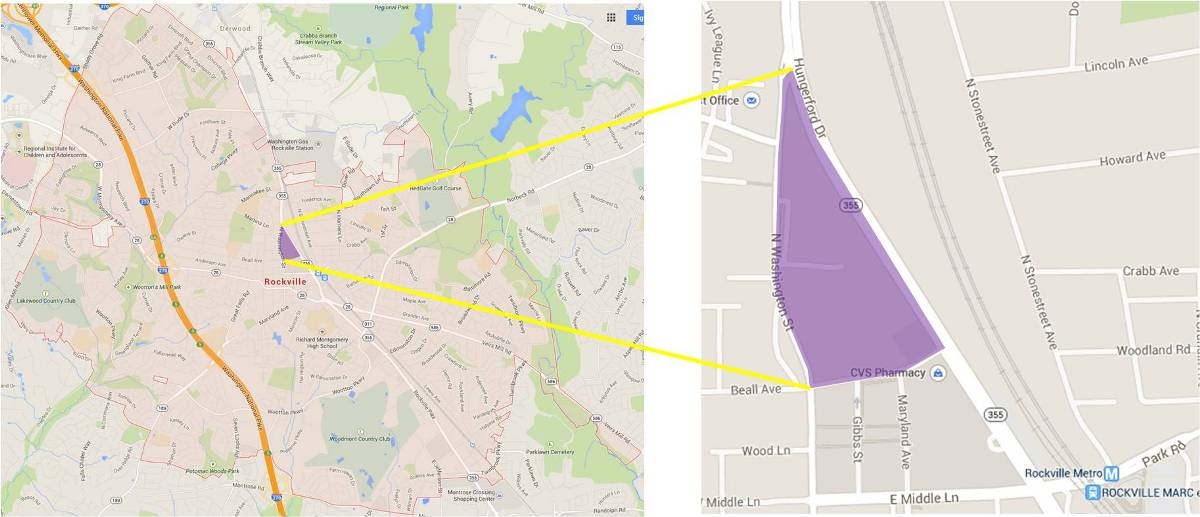A proposal has been made to have Rockville switch from the school standards it presently uses in its APFO to those used by the County in its APFO (the weakest, by far, in Maryland). In my previous post on this matter (Rockville’s APFO), I contrasted the three critical differences between the two approaches (capacity limit, cluster averaging, and counting of planned capacity additions).
In this post, I debunk the myths being put forth as supposed rationales for the proposed switch. This issue is complex. It’s important that community members have access to the straight facts.
Debunked APFO Myths
Obviously, school overcrowding can result from turnover of houses from households without children to households with children. Also, parents can decide to switch their children from private schools to public schools. Accommodating associated increases in school attendees may require adding school capacity. In the meantime, Rockville’s APFO keeps schools which have become overcrowded as a result of these causes from becoming even more overcrowded, by limiting new residential development which otherwise would generate even more school children.
First, it’s simply not logical. If Rockville’s school standards are weakened as proposed, new residential development that’s not currently permitted due to existing school overcrowding would suddenly be allowed. The result would be additional school children. How could that not lead to worsened overcrowding? Any other conclusion defies logic – and credibility.
Second, schools elsewhere in the County are much more likely to be overcrowded, and overcrowded to a far greater degree, than those serving Rockville’s residents. Among the 60 schools in the County above 110% utilization (see table below), only five serve Rockville residents. None of the 13 most overcrowded schools – all of which are over 140% utilization – serve Rockville residents.
The County’s APFO appears to do little, if anything, to prevent overcrowded schools from becoming even more overcrowded. If any jurisdiction is to consider changing the school standards in its APFO, it should be the County to stricter limits, not Rockville to ineffective ones.
Montgomery County Schools Currently Above 110% Utilization
2014-2015 School Year
Source: http://gis.mcpsmd.org/cipmasterpdfs/CIP16AppendixC.pdf
Schools highlighted in blue serve Rockville residents.
| Rank | School | Type | Enrollment | Capacity | Utilization |
|---|---|---|---|---|---|
| Barnsley | |||||
| Wheaton Woods | |||||
| Arcola | |||||
| Cedar Grove | |||||
| Summit Hall | |||||
| Highland View | |||||
| Rachel Carson | |||||
| Greencastle | |||||
| Burtonsville | |||||
| Ashburton | |||||
| Burnt Mills | |||||
| Spark Matsunaga | |||||
| Forest Knolls | |||||
| Ritchie Park | |||||
| Kensington-Parkwood | |||||
| Strawberry Knoll | |||||
| Diamond | |||||
| Lake Seneca | |||||
| Ronald McNair | |||||
| Woodlin | |||||
| Bethesda | |||||
| Wood Acres | |||||
| North Chevy Chase | |||||
| Mill Creek Towne | |||||
| Judith Resnik | |||||
| Rosemary Hills | |||||
| Burning Tree | |||||
| Rolling Terrace | |||||
| Christa McAuliffe | |||||
| Beall | |||||
| College Gardens | |||||
| Pine Crest | |||||
| Kemp Mill | |||||
| South Lake | |||||
| Stonegate | |||||
| Fields Road | |||||
| Brown Station | |||||
| Meadow Hall | |||||
| James Daly | |||||
| Clarksburg | |||||
| Rock Creek Valley | |||||
| Bethesda-Chevy Chase | |||||
| Sargent Shriver | |||||
| New Hampshire Estates | |||||
| JoAnn Leleck / Broad Acres | |||||
| Clopper Mill | |||||
| Great Seneca Creek | |||||
| Chevy Chase | |||||
| Thurgood Marshall | |||||
| Goshen | |||||
| William Page | |||||
| Thomas Pyle | |||||
| Rocky Hill | |||||
| Westland | |||||
| Julius West | |||||
| Takoma Park | |||||
| Potomac | |||||
| Flower Valley | |||||
| Bannockburn | |||||
| Gaithersburg |
It would be unfortunate to have newly unfettered residential development resulting from the proposed weakening of Rockville’s APFO negate what’s been a long time coming – the actual resolution of much of the overcrowding affecting Rockville schools.
Richard Montgomery High School Cluster – Capacity Additions
Source: http://gis.mcpsmd.org/cipmasterpdfs/CIP16CH4_MontgomeryR.pdf
- Julius West Middle School
- Capital project: A large addition to increase school capacity by 391. This will resolve present overcrowding and keep the school’s utilization rate below 97% through 2029.
- Completion date: August 2016
- New elementary school
- Capital project: A new fifth elementary school (with capacity of 602) added to the cluster, which as a result of elementary school service area changes within the cluster could completely resolve overcrowding at Beall ES, College Gardens ES, and Ritchie Park ES. Combined, these three schools are presently 493 students above 100% utilization.
- Completion date: August 2017
First, state law prohibits municipal governments from levying “development impact taxes” on developers to help fund school construction. County governments are allowed to do this, but not municipal governments. There have been significant efforts in the past to try to get the state legislature to allow municipal governments to do this, but the Maryland Association of Counties (MACO) and the Montgomery County government both vociferously oppose the change.
Second, the County government has, for a long time, publicly maintained the position that any money contributed by Rockville for schools would be spent on whichever schools anywhere in the County the County chose to spend it. There would be no assurance, or even likelihood, that money collected and/or contributed by Rockville would go toward schools serving Rockville residents.
As a hypothetical example, if the goal were to foster mixed-use redevelopment with a residential component in town center in the block north of Beall Avenue (see maps below), a limited waiver possible only in that block could be specified. The same approach could similarly be applied to the handful of other very limited areas in which mixed-use redevelopment with a residential component might appropriately be deemed a priority at this time.
To be clear, I am not necessarily endorsing this approach. If it were pursued, it would be essential – from legal and public policy standpoints – to be initiated by the Rockville Planning Commission. They would, via the City’s Master Plan, define a) the specific locations where waivers could be granted, b) the limited extent of, and criteria for granting, possible waivers, and c) the additional requirements developers must fulfill to qualify for a waiver. The Planning Commission would need to do this in the context of a well-defined overall strategy to keep growth and infrastructure aligned across time.
In short, fostering “smart growth” or “transit-oriented development” in no way requires the wholesale weakening of the school standards which apply to Rockville as a whole, as has been proposed.
Hypothetical Example:
A Specific Area in Which Limited Waivers Could Be Granted
(as compared to all of the City of Rockville)

